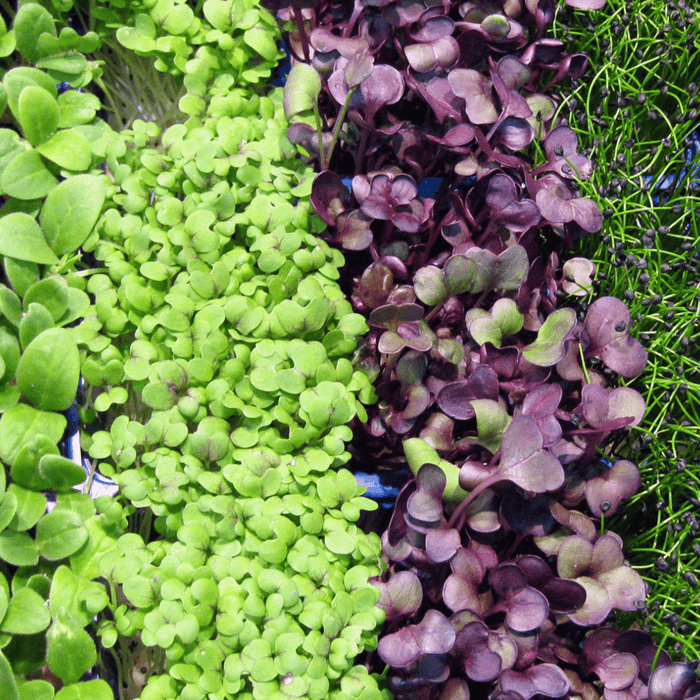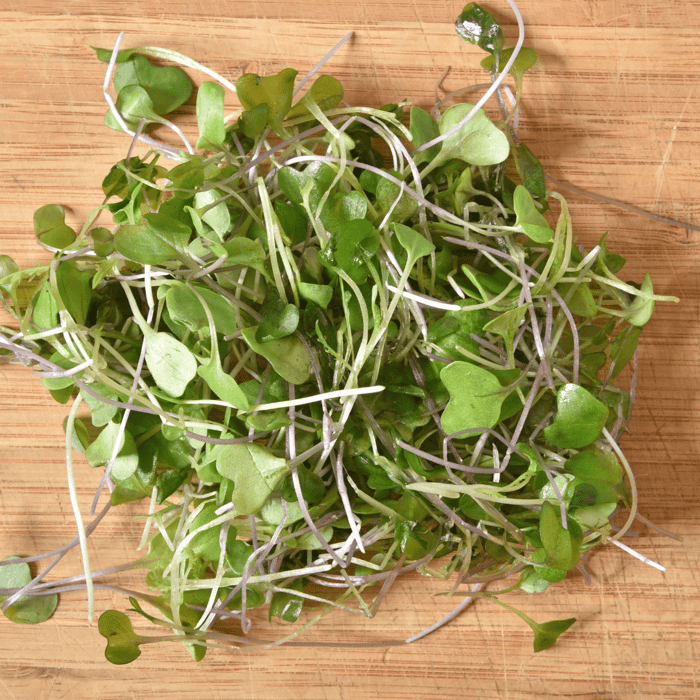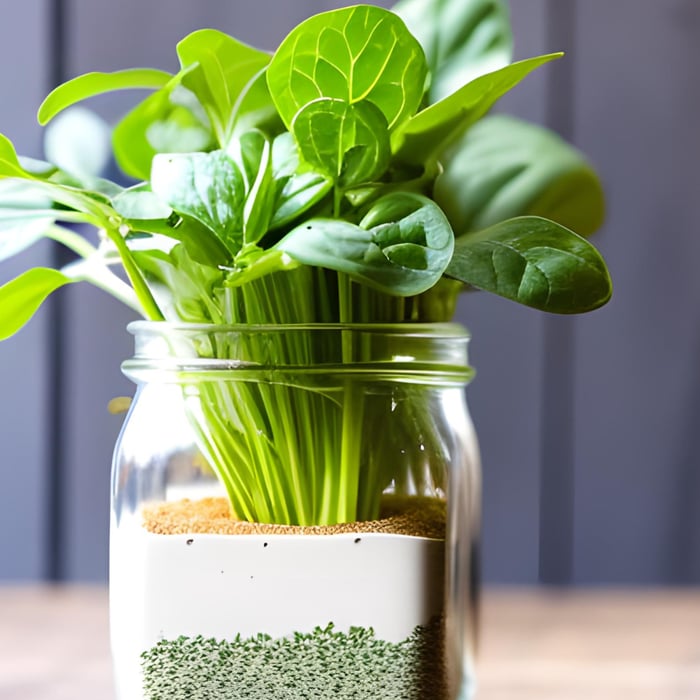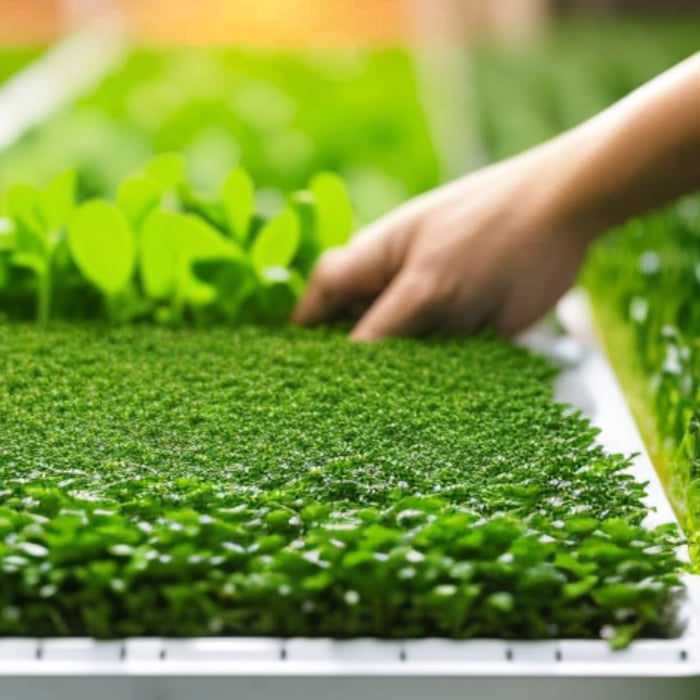Microgreens are small, nutrient-dense greens that are harvested at a very young age. They are easy to grow, require little space, and can be grown year-round, making them an excellent crop for farmers and hobbyists. In recent years, microgreens have gained popularity as a high-value crop, making it an ideal business venture. In this article, we will explore how to grow and sell microgreens.
Why Microgreens are a Good Idea
- High-profit margin: Microgreens can be sold at a high price, making them profitable. You can expect to make between $20 to $30 per tray of microgreens.
- Low start-up costs: Growing microgreens requires little space, equipment, and investment. This makes it an affordable business venture to start.
- Year-round production: Microgreens can be grown year-round, providing a steady yearly income.
- High demand: Microgreens are in tall order, with many grocery stores and restaurants willing to pay top dollar for locally grown, fresh produce.
Starting a Microgreens Business
Starting a microgreens business involves a few essential steps. Here is a step-by-step guide to help you begin:
1. Create a Business Plan
A business plan is essential to determine the feasibility and viability of your business idea. It should include details such as:
- The type of microgreens you want to grow
- The market demand in your area
- The start-up costs involved
- The pricing strategy
- Your marketing plan
2. Choose the Type of Microgreen
There is a wide variety of microgreens to choose from. Some of the popular options include:
- Radish
- Sunflower
- Pea shoots
- Beet
- Cilantro
- Arugula
- Wheatgrass
Choose the microgreen that is popular in your local market and that you enjoy growing.
Waltham 29 Broccoli Sprouting Seeds - 1 Pound
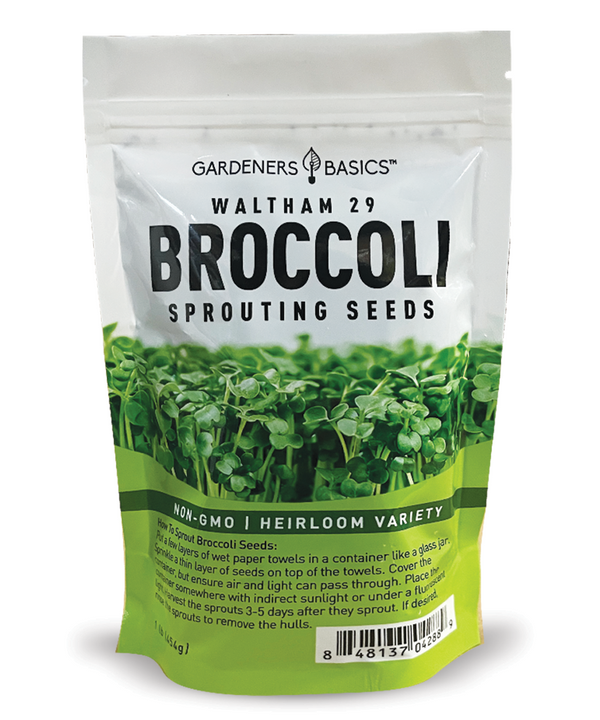
$14.95
$19.95
Waltham 29 Broccoli Sprouting Seeds for Nutrient-Packed Microgreens - Heirloom, Non-GMO, Open-Pollinated, Non-Hybrid Discover the joy of growing your own Waltham 29 Broccoli Sprouts, a powerhouse of flavor and nutrition. These heirloom, non-GMO, non-hybrid, and open-pollinated seeds are perfect for… read more
3. Purchase Microgreen Seeds
Microgreen seeds can be bought from various sources, including local garden centers, online stores, or microgreen seed suppliers. It is essential to choose high-quality, organic seeds for optimal growth.
4. Start Growing Microgreens
Here are the steps to grow microgreens:
- Fill trays with potting soil: Use 10" x 20" trays with drainage holes, fill them with potting soil, and level the surface.
- Sow seeds: Sow the seeds thickly over the soil surface. The recommended seeding density is 1-2 ounces of grains per tray.
- Water: Water the trays thoroughly until the soil is moist but not waterlogged.
- Cover: Cover the trays with a lid or plastic wrap to create a humid environment for germination.
- Place in a warm, bright area: Keep the trays in a friendly, bright room, away from direct sunlight.
- Remove the cover: Once the seeds have germinated, remove the lid and place the trays in direct sunlight.
- Harvest: Microgreens are ready for harvest within 7-14 days. Use scissors to cut them above the soil surface.
5. Sell Microgreens
There are various ways to sell microgreens, including:
- Local markets: Set up a stall at your local farmers' or specialty food market.
- Grocery stores: Approach local grocery stores or restaurants to see if they want to buy your microgreens.
- Online marketplaces: Sell your microgreens on such platforms as Etsy or Amazon.
Tips for Microgreen Growers
Here are some tips to help you grow healthy, high-quality microgreens:
- Use heirloom or organic seeds for optimal growth and flavor.
- Ensure adequate ventilation to prevent mold growth.
- Use clean water for irrigation and avoid overwatering.
- Use a good-quality potting mix with a pH level between 6.0-7.0.
- Keep the growing area clean and debris-free to prevent pests and diseases.
- Rotate your crops to avoid nutrient depletion in the soil.
- Harvest your microgreens at the right time, usually 7-14 days after sowing.
Scaling Your Microgreens Business
Once you have established your microgreens business, you can consider scaling production to increase profits. Here are some tips to help you scale up your microgreens business:
- Increase the trays: Start with 20 microgreens and gradually increase the number as demand grows.
- Automate production: Consider investing in equipment such as seeding machines or watering systems to increase efficiency and reduce labor costs.
- Expand your market: Consider selling to local restaurants, catering companies, or grocery stores.
- Diversify your offerings: Expand your product line by offering a wider variety of microgreens or other specialty crops.
FAQ
Q: How much space do I need to grow microgreens?
A: Microgreens can be grown in small spaces, such as windowsills or tables. You can start with as little as one or two trays and gradually increase as demand grows.
Q: How much can I expect to earn from selling microgreens?
A: The profit margin for microgreens is high, with growers typically earning between $20 to $30 per tray of microgreens. However, the actual profit depends on the market demand, pricing strategy, and production costs.
Q: What are the best microgreens to grow for profit?
A: The best microgreens to grow for profit are prevalent in your local market, easy to grow, and high yield. Some popular options include sunflower, pea shoots, radish, and wheatgrass.
Q: How long does it take to grow microgreens?
A: Microgreens can be harvested within 7-14 days after sowing, depending on the type of microgreen and growing conditions.
Q: Can I use regular seeds to grow microgreens?
A: While regular seeds can be used to grow microgreens, it is recommended to use high-quality, organic seeds specifically labeled for microgreens. These seeds are specially selected for their fast germination rate, high yield, and nutritional value.
Q: Can I grow microgreens without soil?
A: Yes, microgreens can be grown hydroponically using a nutrient-rich solution instead of soil. Hydroponic systems can be more efficient and offer faster growth rates, but they require more initial investment in equipment and setup.
Q: How do I prevent mold growth in my microgreens?
A: To prevent mold growth, ensure adequate ventilation, avoid overwatering, and keep the growing area clean and debris-free. Using a high-quality potting mix is also recommended to prevent overcrowding of the trays.
Q: How do I know when to harvest my microgreens?
A: Microgreens are ready for harvest when they have grown to about 1-2 inches tall and have developed their first true leaves. Use scissors to cut them just above the soil surface.
Q: How can I store harvested microgreens?
A: Microgreens should be stored in a cool, dry place like a refrigerator. They can be stored for up to a week in a sealed plastic bag or container, but it is best to consume them as soon as possible for optimal flavor and nutritional value.
Q: Can I grow microgreens year-round?
A: Yes, microgreens can be grown year-round as long as they are kept in a warm, bright area away from direct sunlight. Indoor growing setups, such as grow lights or hydroponic systems, can provide optimal growing conditions regardless of the season.
Q: How do I price my microgreens?
A: The pricing strategy for microgreens depends on various factors, such as market demand, production costs, and competition. Research the prices of similar products in your area and determine the best pricing strategy for your business.
Q: How do I market my microgreens business?
A: There are various ways to market your microgreens business, such as setting up a website or social media page, attending local markets or fairs, partnering with local restaurants or grocery stores, and word-of-mouth referrals from satisfied customers. Consider offering samples or discounts to attract new customers and build a loyal customer base.
Q: Can I use sprouting seeds to grow microgreens?
A: While sprouting seeds can be used to grow microgreens, they are not recommended as they are often treated with chemicals and may not yield well. It is best to use high-quality, organic seeds specifically labeled for microgreens for optimal growth and flavor.
FURTHER READING --->>> How to grow Basil Microgreens
Conclusion
Microgreens are an excellent crop for farmers and hobbyists looking to start a profitable business with low start-up costs and high demand. Following the steps outlined in this article and implementing the tips and strategies provided, you can grow healthy, flavorful microgreens and sell them for a high-profit margin. Dedication and hard work can turn your passion for microgreens into a successful and rewarding business venture. Now that you know how to grow and sell microgreens, will you start your own little side hustle?



